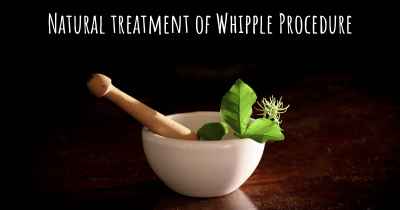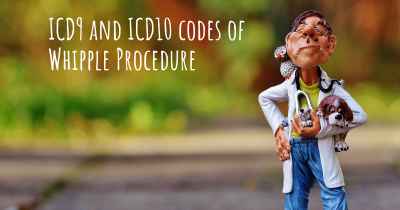Which are the symptoms of Whipple Procedure?
See the worst symptoms of affected by Whipple Procedure here

Symptoms of Whipple Procedure
The Whipple procedure, also known as pancreaticoduodenectomy, is a complex surgical procedure performed to treat certain conditions affecting the pancreas, bile ducts, and small intestine. This procedure involves the removal of a portion of the pancreas, the duodenum (first part of the small intestine), the gallbladder, and sometimes a portion of the stomach.
While the Whipple procedure is a life-saving surgery for many patients, it is important to be aware of the potential symptoms that may arise after the procedure. These symptoms can vary depending on individual factors and the specific condition being treated. It is crucial to consult with a healthcare professional for a comprehensive evaluation and personalized guidance.
1. Pain and Discomfort
Pain and discomfort are common symptoms experienced after the Whipple procedure. The surgery involves significant abdominal incisions and manipulation of organs, which can lead to post-operative pain. Pain medications and proper wound care can help manage this discomfort during the recovery period.
2. Digestive Issues
Digestive issues are another set of symptoms that may occur after the Whipple procedure. The removal of a portion of the pancreas and the duodenum can affect the normal digestive process. Patients may experience difficulty digesting certain foods, leading to symptoms such as bloating, gas, diarrhea, or fatty stools. Dietary modifications and enzyme supplements may be recommended to alleviate these symptoms and improve digestion.
3. Weight Loss
Weight loss is a common symptom experienced by individuals who have undergone the Whipple procedure. The surgery can impact the body's ability to absorb nutrients, leading to unintentional weight loss. It is important to work with a healthcare professional or a registered dietitian to develop a personalized nutrition plan to maintain a healthy weight and prevent malnutrition.
4. Diabetes
Diabetes can develop as a result of the Whipple procedure. The pancreas plays a crucial role in producing insulin, a hormone that regulates blood sugar levels. When a portion of the pancreas is removed, it can lead to insulin deficiency and the development of diabetes. Regular monitoring of blood sugar levels and appropriate management strategies, such as medication or insulin therapy, may be necessary.
5. Fatigue
Fatigue is a common symptom experienced by individuals recovering from the Whipple procedure. The body requires time to heal and regain strength after major surgery. It is important to prioritize rest, follow a balanced diet, and gradually increase physical activity under medical guidance to combat fatigue and regain energy levels.
6. Surgical Complications
While rare, surgical complications can occur after the Whipple procedure. These may include infection, bleeding, leakage from the surgical site, or damage to nearby organs. It is important to closely follow post-operative care instructions, report any unusual symptoms to the healthcare team, and attend regular follow-up appointments to monitor for potential complications.
It is essential to note that the symptoms mentioned above are general and may vary from person to person. Each individual's experience after the Whipple procedure can differ based on their overall health, the underlying condition being treated, and the surgical technique employed. Therefore, it is crucial to consult with a healthcare professional for personalized guidance and support throughout the recovery process.








